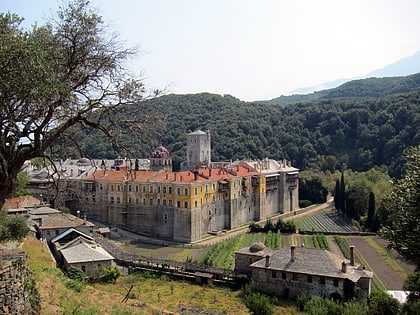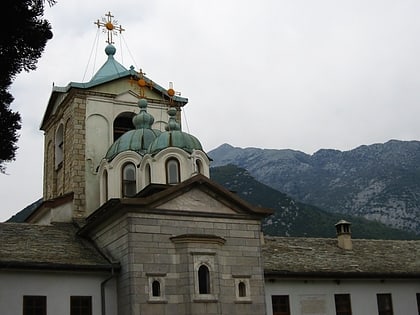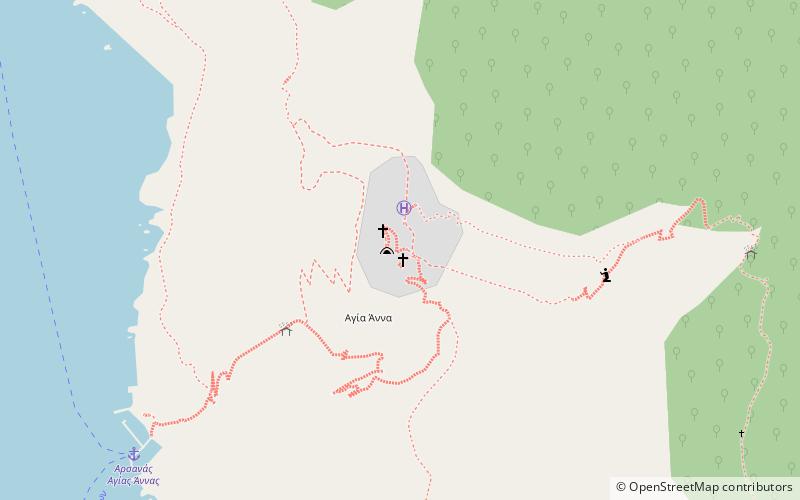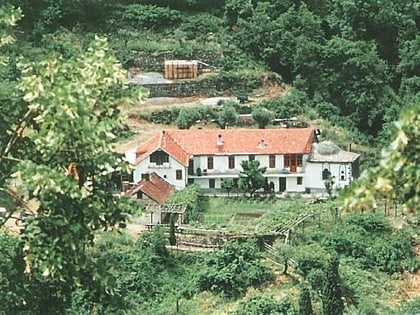Great Lavra

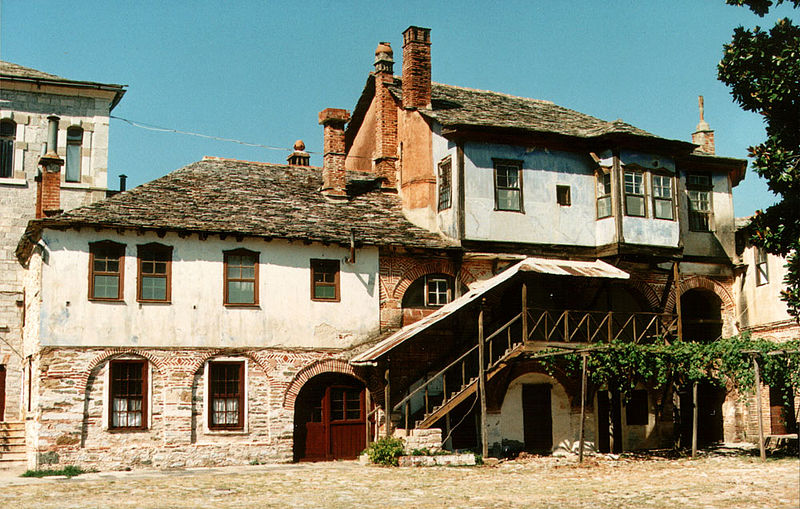
Facts and practical information
Nestled atop the rocky peninsula of Mount Athos in Greece, the Great Lavra Monastery stands as a bastion of Orthodox Christian monasticism. Founded in 963 by Saint Athanasius the Athonite, this spiritual haven is not only the first monastery constructed on the hallowed grounds of Athos but also the largest and most prominent of the twenty monasteries that form the monastic state.
The Great Lavra Monastery, often simply referred to as 'Lavra,' has been a beacon of religious devotion and scholarship for over a millennium. Its towering fortified walls and imposing structures are a testament to the historical significance and the monastic way of life that continues to thrive within its precincts. The monastery complex includes the main cathedral, or Katholikon, dedicated to the Annunciation of the Blessed Virgin Mary, as well as chapels, monks' cells, and a library rich in ancient manuscripts and religious texts.
One of the most treasured possessions of the Great Lavra is the miraculous icon of the Virgin Mary, known as the "Axion Estin," which has been a source of inspiration and veneration for countless pilgrims. The monastery's architecture reflects the Byzantine style, with its frescoes and mosaics considered masterpieces of religious art.
As a monastic establishment, the Great Lavra has played a pivotal role in preserving Orthodox Christian traditions and spiritual teachings. Its monks live a life of prayer, contemplation, and communal living, adhering to a strict code of asceticism and religious practice.
Despite its remote location, the Great Lavra remains a site of significant religious pilgrimage and cultural heritage. Access to Mount Athos is restricted, and visitors, particularly male pilgrims, must obtain a special permit to enter the monastic state. Women are not allowed to set foot on Mount Athos, in keeping with the ancient practice known as avaton, which is meant to preserve the monastic atmosphere.
Athos
Great Lavra – popular in the area (distance from the attraction)
Nearby attractions include: Monastery of Iviron, Prodromos, Karakallou Monastery, Agiou Pavlou monastery.

